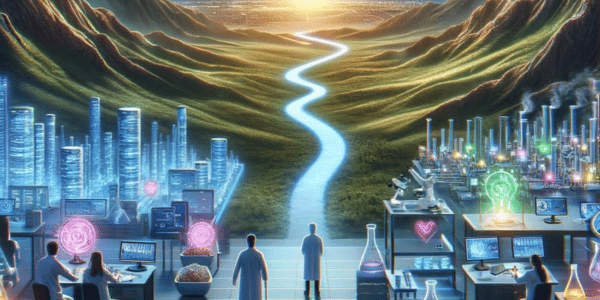A*STAR NEWS
FEATURES
Turn Carbon Emissions Into Sustainable Growth Opportunities
By Professor Yeoh Lean Weng, Chief Sustainability Officer, A*STAR.jpg?sfvrsn=869db8c6_2)
Hot on the heels of climate change, Singapore is feeling the heat. Earlier in May this year, temperatures in Singapore reached a record-high 37 degrees Celsius – the highest in 40 years. As Singapore braces itself for warmer and drier weather, there is an urgent need for novel solutions to combat climate change in the long term for a more climate-resilient future.
Carbon emissions is the one of the largest culprits behind climate change and is the most significant greenhouse gas emission in Singapore. However, technology could be used to capture carbon emissions to reduce the greenhouse warming effect and harness their value as useful materials.
A good use case of such technology is transforming carbon dioxide into alternative sand. A*STAR is working with the National University of Singapore and Nanyang Technological University, Singapore to create alternative sand from carbon dioxide and waste materials like incineration bottom ash (IBA) and recycled concrete aggregates (RCAs). Its unique ability to encapsulate heavy metals found in IBA prevent them from leaching into the environment, making it suitable for construction and manufacturing purposes.
With an average carbonation capacity of around 10%, this sustainable innovation has the potential to capture and store 200,000 tonnes of CO2 emissions to create 2.2 million tonnes of valuable sand per year, from around half a million tonnes of IBA and 1.5 million tonnes of RCAs generated annually as waste in Singapore.
A*STAR scientists are also developing technology with the ability to produce carbon neutral sustainable aviation fuel from CO2. The new streamlined process allows CO2 to be combined directly with hydrogen which will generate a more efficient yield of aviation fuel while using less energy, as compared to the current process which requires CO2 to first be converted to carbon monoxide (CO).
Turning waste into value
More can also be done to give waste a new lease of life, which can help to cut down waste generation and unlock their potential as useful resources.
The plastic recycling rate in Singapore is very low at just six per cent – largely due to the challenges of contamination and sorting when recycling plastic. To combat these, A*STAR scientists have developed technology that can directly convert different types of plastic waste (including contaminated and mixed plastic waste) into hydrogen for use as a clean energy source, as well as solid carbon, which can be used to create vehicle bodies and building materials. Such sustainably produced hydrogen supports Singapore’s energy transition plan to diversify its power mix and aid decarbonisation through low-carbon energy sources like hydrogen.
Food waste is also one of Singapore’s largest waste streams, accounting for 12 per cent of the country’s waste. Discarded food is typically incinerated in Singapore, which puts pressure on our limited landfill space at Semakau. Furthermore, rotting food waste produces methane, a greenhouse gas which worsens global warming. Harnessing technology to tackle food waste offers the added benefit of transforming them into useful materials.
Special processes developed by A*STAR allow fruit waste to be upcycled into sustainable plastic, leather and wood which are biodegradable, reducing the reliance on fossil fuels typically used to create these essential materials. A*STAR has also collaborated with local company Westcom Bio-Tech to develop the microbial treatment used in biodigester systems that can transform food waste into odourless, organic compost within 24 hours. Westcom has deployed these in central kitchens, hospitals, commercial malls, schools and office pantries.
Leveraging digital technologies for a more liveable city
Buildings in Singapore’s dense urban landscape have heat absorbing surfaces which will cause a spike in temperatures. To create a cooler built environment while reducing the risk of costly physical trial-and-error, urban planners for the new Tengah town used an innovative tool called the Integrated Environmental Modeller (IEM) to design building layouts with optimal wind flow. The nifty tool developed by A*STAR and Housing & Development Board automatically calculates the trade-offs among environmental factors such as shade, sunlight, wind and rain to aid urban planning by simulating optimised building layouts.
How can we move towards a greener future?
In today's dynamic landscape, adopting eco-friendly practices can offer a myriad of benefits for both businesses and the environment. However, accurate data collection, analysis and reporting can be challenging and time-consuming, which can impede companies’ sustainability efforts.
A*STAR has developed a Life Cycle Assessment (LCA) platform to help companies quantify their impact on the environment and identify ways to reduce their carbon footprint. 15 organisations including government agencies and businesses have used this platform to gain visibility of their sustainability performance such as raw material usage, energy consumption and their associated environmental impact.
Turning emerging low carbon technologies into reality can be a lengthy and costly process. A*STAR is working with public and private partners to create a translational test-bed facility that allows companies to pilot and scale up their low carbon technologies in a more efficient and cost-effective way by tapping on plug-and-play, modular reactor-catalyst set-ups, with the ability to monitor processes in real time through digital twins.
With a strong commitment to sustainability coupled with helpful technological innovations, Singapore can be better positioned to accelerate sustainability efforts for a greener future.
Was the article helpful?
A*STAR celebrates International Women's Day

From groundbreaking discoveries to cutting-edge research, our researchers are empowering the next generation of female science, technology, engineering and mathematics (STEM) leaders.
Get inspired by our #WomeninSTEM




